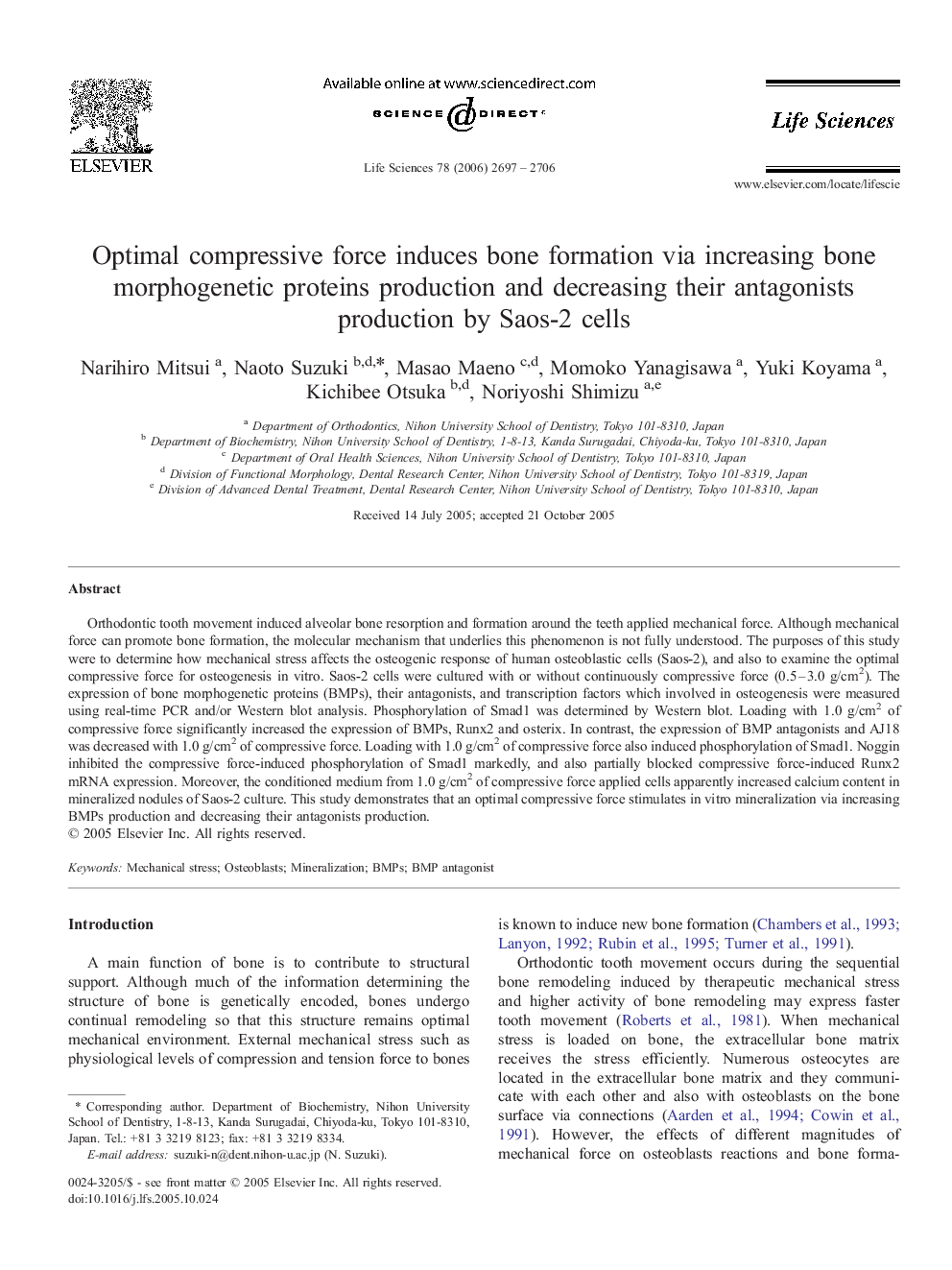| Article ID | Journal | Published Year | Pages | File Type |
|---|---|---|---|---|
| 2554231 | Life Sciences | 2006 | 10 Pages |
Orthodontic tooth movement induced alveolar bone resorption and formation around the teeth applied mechanical force. Although mechanical force can promote bone formation, the molecular mechanism that underlies this phenomenon is not fully understood. The purposes of this study were to determine how mechanical stress affects the osteogenic response of human osteoblastic cells (Saos-2), and also to examine the optimal compressive force for osteogenesis in vitro. Saos-2 cells were cultured with or without continuously compressive force (0.5–3.0 g/cm2). The expression of bone morphogenetic proteins (BMPs), their antagonists, and transcription factors which involved in osteogenesis were measured using real-time PCR and/or Western blot analysis. Phosphorylation of Smad1 was determined by Western blot. Loading with 1.0 g/cm2 of compressive force significantly increased the expression of BMPs, Runx2 and osterix. In contrast, the expression of BMP antagonists and AJ18 was decreased with 1.0 g/cm2 of compressive force. Loading with 1.0 g/cm2 of compressive force also induced phosphorylation of Smad1. Noggin inhibited the compressive force-induced phosphorylation of Smad1 markedly, and also partially blocked compressive force-induced Runx2 mRNA expression. Moreover, the conditioned medium from 1.0 g/cm2 of compressive force applied cells apparently increased calcium content in mineralized nodules of Saos-2 culture. This study demonstrates that an optimal compressive force stimulates in vitro mineralization via increasing BMPs production and decreasing their antagonists production.
